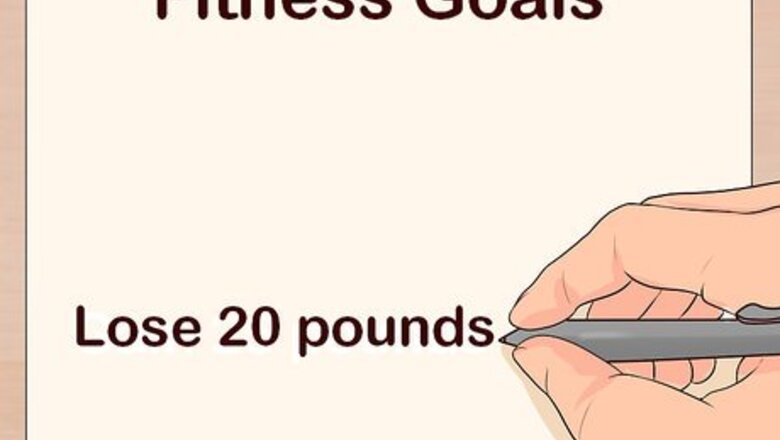
views
Determining Your Goals
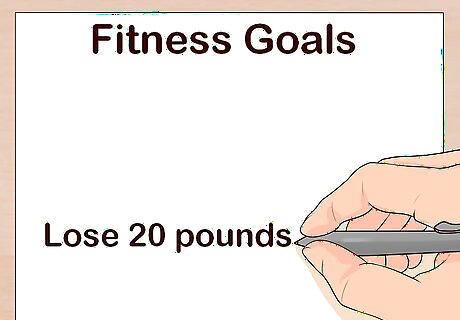
Make a list of your personal fitness goals. Organizing your goals on paper will make it easier to design a training plan based off of them. Take time to really think about what you want to achieve with your training plan. For example, your goal could be to lose 20 pounds (9.1 kg), or to gain 25 pounds (11 kg) in muscle mass. Your goal could be something simple, like feeling more energetic and alert during the day or improving your mood through exercise.
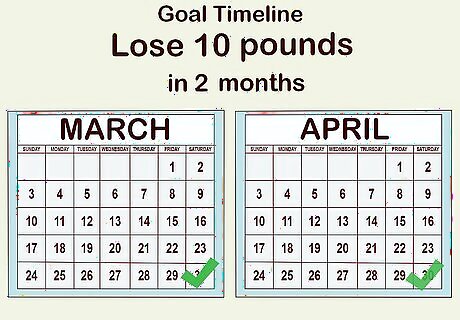
Come up with a realistic timeline for achieving your goals. The timeline for your fitness training plan depends on what your specific goals are. Establishing a timeline can make it easier to schedule your workouts and stick to your plan. Make sure to set short-term and medium-term goals to help keep you motivated while you work towards your long-term goals. For example, you might set the goal of running a 1 K race or running 3 out of 7 days of the week. For example, if your goal is to lose 10 pounds (4.5 kg), your timeline could be 2 months. Since you can lose 1–2 pounds (0.45–0.91 kg) per week at a healthy pace, 2 months is a realistic timeline. If you're trying to gain muscle mass, you could set a goal of gaining 1–2 pounds (0.45–0.91 kg) of muscle mass per month, which is a realistic goal. If your fitness goals are more long-term, like improving your endurance so you can go hiking more, try to break them up into smaller increments. For example, you could say that after 3 months you want to do a 1 mile (1.6 km) hike, and after 6 months you want to do a 3 mile (4.8 km) hike.
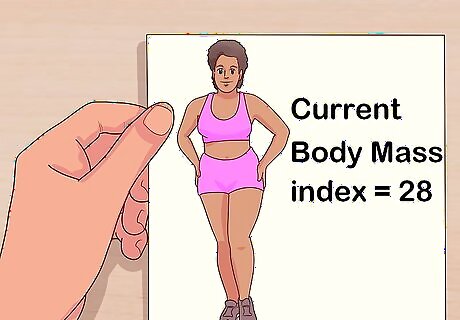
Measure your current fitness level. Before you design your fitness training plan, it's a good idea to figure out what level of physical fitness you're starting at. Then, you can compare your stats along the way to your starting point and see how much progress you've made. If your goal is to lose or gain weight, weigh yourself and write down your starting weight. You might also take body measurements using a measuring tape to track how your body changes. If you're designing a fitness plan to get stronger and build muscle mass, record how much weight you can lift before you start training. Take a picture of yourself before you start. Every 2-4 weeks, take another photo to track your progress. If your goal is to improve your endurance, time yourself while walking or running a mile. You can also measure and record your body mass index.
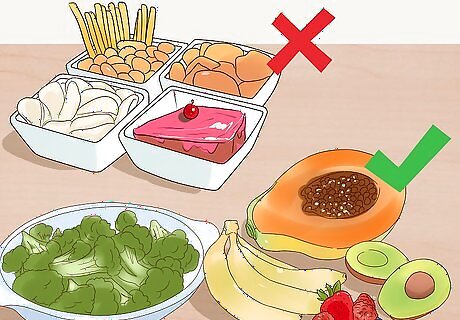
Make dietary changes to help yourself meet your fitness goals. While routine exercise can help you meet your goals, you may also want to adopt a healthier diet, especially if you're trying to lose weight or put on muscle mass. Eating healthier foods will give you more energy for your workouts, and it will help you see faster results. If you're trying to lose weight, eliminate unhealthy processed foods that are high in sugar and salt. Replace processed foods with fruits, vegetables, and foods that contain healthy fats, like olive oil, avocados, fish, and nuts. If you're trying to gain muscle mass, eat protein-rich foods like chicken, eggs, cheese, and beans. Aim to get around 0.6-1 gram of protein per 1 pound (0.45 kg) of your body weight every day.
Designing Your Workouts
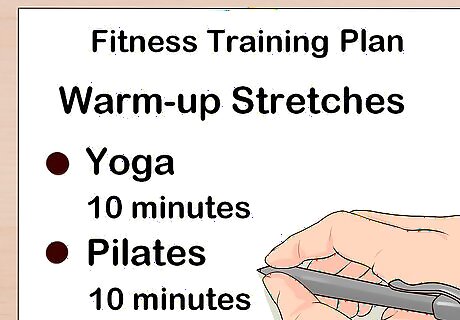
Include 5-10 minutes of warm-up stretches before your workouts. Do dynamic stretches that move the muscles you plan on working out through their full range of motion. Try lunges, arm circles, high kicks, or marching to help get your blood flowing and your heart pumping. Avoid static stretches, like yoga, before exercise. These are best done after your workout.
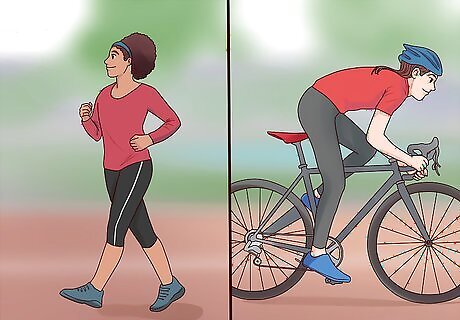
Do moderate and vigorous aerobic exercises if your goal is to lose weight. Including 150-300 minutes of moderate and vigorous aerobic exercise a week in your fitness training plan can help you achieve your weight-loss goal. There are a variety of aerobic exercises you can do at home or at the gym, including: Brisk walking and swimming, which are both moderate aerobic exercises. Running, bicycling, and dance aerobics, which are all vigorous aerobic exercises. You'll know your exercise intensity is vigorous if you're breathing deeply and sweating after a few minutes of working out. With moderate exercise, you should be breathing normally. You also won't start sweating until after about 10 minutes of moderate exercise.
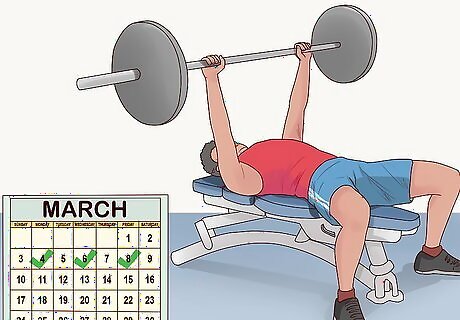
Do weight-training exercises if your goal is to gain muscle mass. Thirty minutes of weight-training exercises 2-3 times a week can help build your muscles and make them stronger. If you include weight-training in your fitness plan, focus on using proper form so you don’t injure yourself, and do a variety of exercises so you're building all of your muscles instead of a select few. Weight-training exercises you can try are: Bench press Barbell rows Overhead press Squats Deadlifts
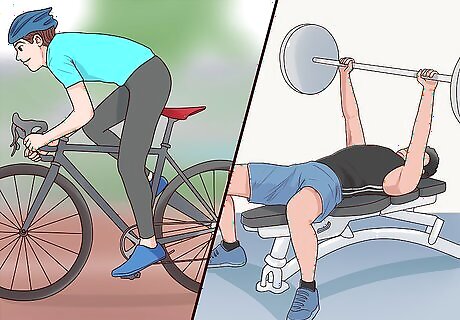
Do both aerobic and weight-training exercises if your goal is overall fitness. Including both aerobic and weight-training exercises in your fitness training plan can help you be a healthier person overall. If your goals don't require you to prioritize one form of exercise over the other, then do a balance of both. Design your training plan so you're alternating between aerobic exercises and strength-training exercises with each workout session. For example, you could do aerobic exercises on Mondays, Wednesdays, and Fridays, and then do weight-training exercises on Tuesdays, Thursdays, and Saturdays. Sunday could be your day of rest.
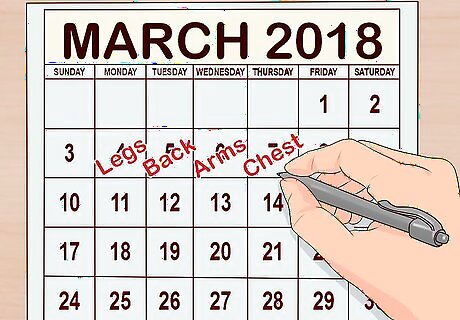
Balance your training plan by doing different exercises. When you’re designing your training plan, include a variety of exercises instead of just 1 or 2. Doing a bunch of different exercises can help work out different parts of your body and prevent your muscles from getting strained because of overuse. For example, if you’re trying to build muscle mass, include exercises in your training plan that work out different muscles. During one workout, you can do exercises that build your legs, and the next workout, you can do upper body exercises. The major muscle groups you'll want to work out include your legs, hips, abdomen, chest, arms, back, and shoulders.
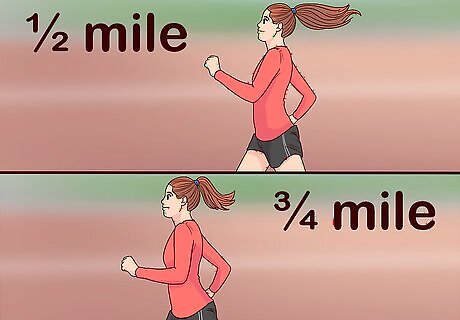
Start with low-intensity workouts and progress slowly. When you're first starting out with your fitness training plan, it's important that you start slowly with lower intensity exercises so you don't injure yourself. As you get stronger, you can gradually increase the intensity of your exercises. For example, if your fitness plan includes strength-training exercises, you'd want to start out with weights that you can lift with little difficulty. Then, each week, you would add a little more weight to what you're lifting. If you're focusing on aerobic exercises, you'd want to gradually increase the duration or distance of your exercises. You could start out running ⁄2 mile (0.80 km) on the treadmill, and then progress to ⁄4 mile (1.2 km) and so on. By progressing slowly with your workouts, you'll continue to see results, and you won't hit a plateau.
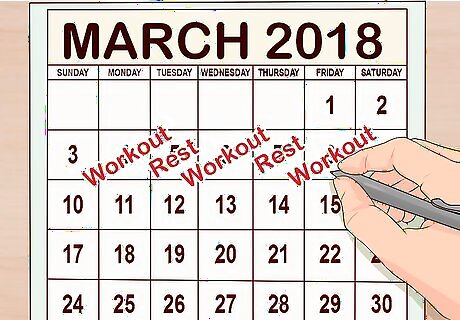
Include time for recovery in your plan. Giving your body time to recover after your workouts lets your muscles repair themselves, and it also helps prevent injury. Give your muscle groups at least 1-2 days to recover before you work them out again. For example, you could take a day off in between workouts. Your workout schedule could be Monday, Wednesday, and Friday, with 4 days off throughout the week. If you don't want to take that much time off, you could alternate which muscles you're exercising during each workout. For example, you could work out your upper body on Mondays, Wednesdays, and Fridays, and work out your lower body on Tuesdays, Thursdays, and Saturdays. Then, on Sundays, you could take an entire day off or focus on muscles that you don't work out on Saturdays and Mondays. EXPERT TIP Laila Ajani Laila Ajani Fitness Trainer Laila Ajani is a Fitness Trainer and founder of Push Personal Fitness, a personal training organization based in the San Francisco Bay Area. With over 10 years as a trainer and exercise specialist, Laila has expertise in competitive athletics (gymnastics, powerlifting, and tennis), personal training, distance running, and Olympic lifting. Laila is certified by the National Strength & Conditioning Association (NSCA), USA Powerlifting (USAPL), and she is a Corrective Exercise Specialist (CES). Laila Ajani Laila Ajani Fitness Trainer I recommend choosing non-consecutive days for weightlifting. Your schedule could be Monday, Wednesday, and Friday, or Tuesday, Thursday, and Saturday, or a similar pattern. Select a suitable time of day that fits your schedule. Dedicate around 30 to 60 minutes to exercise, and stick with it.
Tracking Your Progress
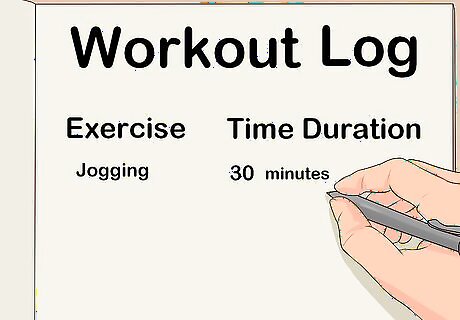
Log your workouts so you know how much you’re exercising. Keeping track of when you’re working out will tell you whether or not you’re sticking to your fitness plan and being consistent. You can also use your log to help you figure out which exercises are working and which ones aren’t, and also to see how much you’re progressing with your workouts. You can keep track of your workouts in a journal or notebook. Write down when you’re working out, what exercises you’re doing, and how long you’re spending on each exercise. You can also log your workouts on the computer or by using an app on your phone or mobile device.
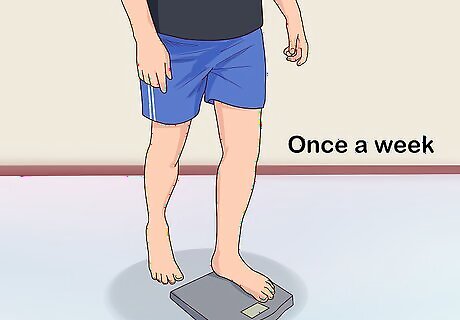
Weigh yourself once a week. If one of the goals of your fitness training plan is to lose weight or gain muscle mass, weighing yourself on a scale will help you track your progress. Weigh yourself once a week on the same day and at the same time, preferably in the morning.
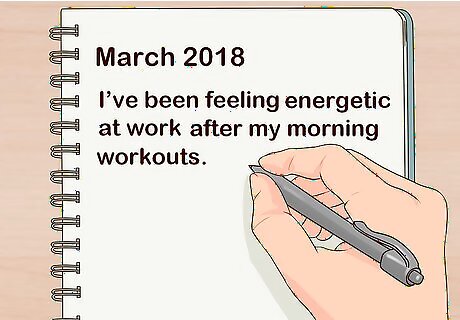
Keep a journal about how you feel physically and emotionally. If your fitness goal is to feel better about yourself or feel healthier in general, journaling your thoughts can help you track your progress. Take time every day or even just once a week to write down how you’re feeling. Try to focus on specific changes you’ve noticed since starting your fitness training plan. For example, if you’ve been feeling alert and energetic at work after your morning workouts, write about that in your journal.
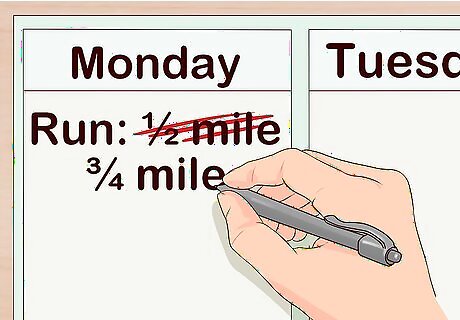
Adjust your fitness training plan as needed. Use the information you're gathering in your log and on the scale to determine whether or not your training plan is working. If you're not seeing the results you were hoping for, you may need to increase the intensity and duration of your workouts. For example, if your goal is to lose 1 pound (0.45 kg) a week, and you're not seeing that happen on the scale, you'll know that you need to make adjustments to your plan.




















Comments
0 comment